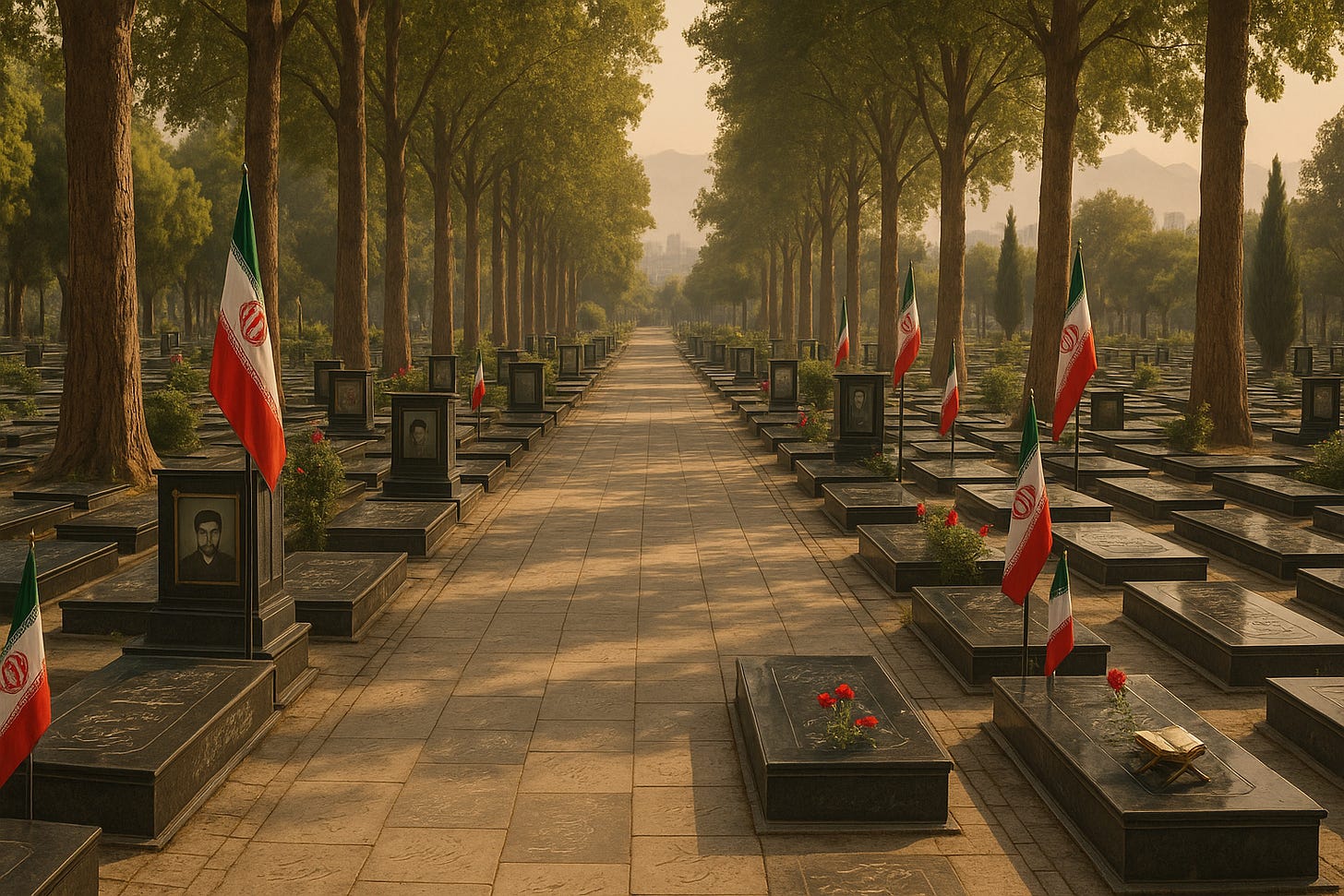Section 42: A Sacred Ground Where a New Generation Gathers
In Tehran's Behesht-e Zahra cemetery, the resting place for victims of the recent war with Israel has become a point of convergence for a nation, where the youth find a silent dialogue with the fallen
In the vast expanse of Tehran's Behesht-e Zahra Cemetery, a place that holds generations of the city's history, a new section has become a solemn landmark. Section 42, the final resting place for around 250 martyrs from the recent conflict with Israel, is more than just a burial ground; it has transformed into a space of national pilgrimage and quiet reflection.
The section itself is a poignant sight. Rows of white graves are adorned with the green and red flags of the Islamic Republic of Iran, fluttering in the breeze. It is here, next to the section dedicated to martyrs of the eight-year war with Iraq, that a new chapter of sacrifice is being honoured. The connection is palpable, as if the "cradle" of the revolution continues to raise soldiers in the spirit of defence and resistance.
Visitors from all walks of life steadily fill the space, offering condolences, praying, and comforting one another. The air is thick with shared grief but also with an overwhelming sense of pride. Families of the fallen share stories of their loved ones.
The mother of Martyr Commander Javad Pour Rajabi recalls telling God to "accept this gift from us" as she bid farewell to her son.
The father of Martyr Hossein Taghi Kako speaks with firm pride about his son's will, which insisted that no title be greater on his tombstone than "Martyr" and "Soldier of the Leader."
The gravestones in Section 42 tell a story of a nation united in loss. They represent a cross-section of Iranian society—doctors, engineers, students, and drivers, from a two-month-old infant named Rayan to a father and son buried side-by-side. Each grave is a testament to the human cost of a conflict that touched every corner of the community.
Perhaps the most striking feature of Section 42 is the presence of Iran's younger generation. Young men and women, some in modern, non-religious attire you might not expect to see in such a setting, walk respectfully among the graves. They sit, whisper, and reflect, seemingly transformed by a direct confrontation with the realities of homeland, resistance, and martyrdom. This war, with all its tragedy, has forged a profound connection between the youth and the nation's heroes.
This sense of community is further embodied by a hospitality stand, run not by any official organisation, but by volunteers who have been serving refreshments since the first burials.
"We were supposed to stay until the fortieth day," one young man explains, "but so many people came... we'll be here until after Arbaeen."
In Section 42, personal sorrow and national pride merge. It is a place where mothers, standing tall with a smile tinged with sorrow, accept gratitude for their sacrifice, and where the youth of Iran speak silently with the martyrs, ensuring their legacy endures.
Source: Tehran Times


